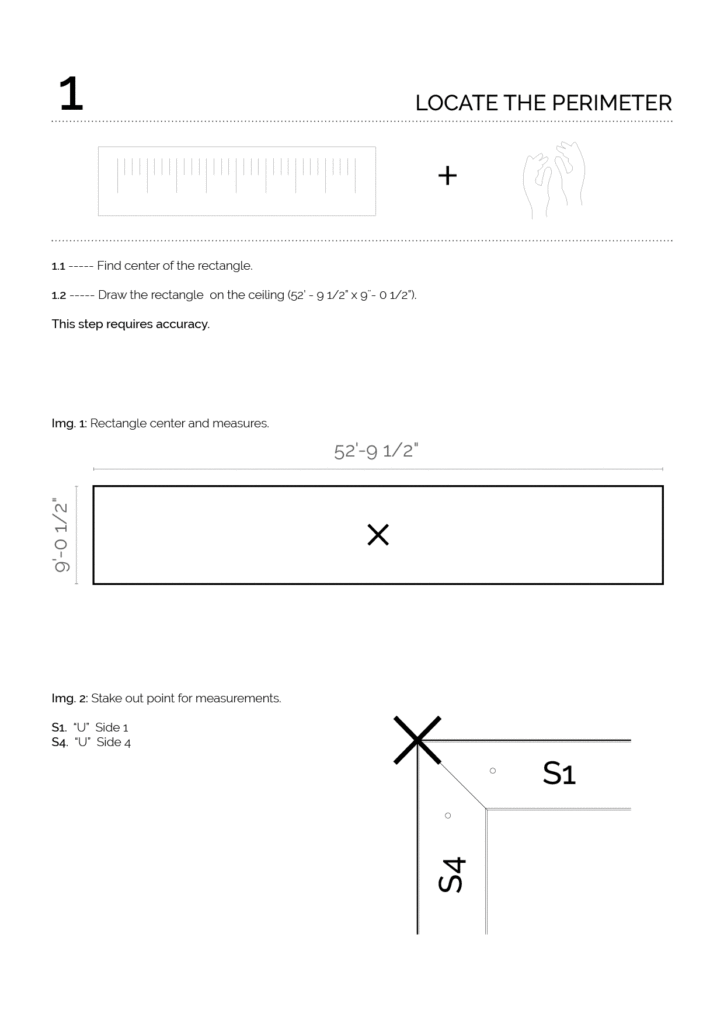The story of how a silly mistake almost wrecked a great project
How a failure made us improve our working methodology by introducing 6 simple changes in the process.
The project
In 2018 we had the opportunity to do a large ceiling installation for a Hilton hotel in Boston.
We worked hand in hand with Lori Kramer to shape a focal piece in the lobby bar. We had to create an installation that would simulate the optical illusion of sunlight rays illuminating the gloom.

We subdivided the ceiling surface into 5 irregular pyramids with a point of light at the vertex. These pyramids were formed with colored glass slats that got gradually darker toward the central light spot.

Each of the pieces composing the metal substructure on the ceiling was different and had to be numbered to ensure a correct installation. The assembly process was simple but very precise because each piece was unique and irreplaceable.
We focused our attention on the tough part of the design. All the special pieces were designed, manufactured, numbered, and packed correctly, but we made a major mistake.
The mistake
There were two very simple pieces that served to join the portions of the structural radios that held the glass slats. The design was correct, the quantities of these pieces were calculated correctly but due to a human error, the necessary quantities were interchanged without anyone noticing the error in time.
We shipped all the material to Boston and sent our team of assemblers from Miami. Everything was going well until we ran out of one of the joining pieces. Almost 4000 kilometers away and with the installation already underway, we had no choice but to stop the installation at step 11.
Due to this tiny mistake, we lost several thousand euros, we became for the first time the cause of a delay, and it placed us on a very complicated position in front of our client.

The learning
With a lot of effort and the collaboration of our suppliers, we were able to manufacture the missing parts very quickly. We traveled from Spain to complete the installation only a few days after having to stop it.
This stressful and costly experience at an economic level was a great lesson that forced us to establish new work protocols. We understood that despite being a team of people who individually can make mistakes, as a team we had to find a way to ensure we are able to react on time.
These were the changes we introduced in our process:
- Automate error detection: Always introduce checkboxes in spreadsheets that automatically detect errors.
- Name the person in charge and also the supervisor of each task. One person can make a mistake but two people making the same mistake is unlikely.
- List the most sensitive processes. Anticipate which are the parts that can be easily damaged during shipping and assembly and look for a mechanism that allows us to react wherever we are.
- Always make extra parts of small components that can be lost on site.
- Use as much as possible standard assembly parts that can be purchased on-site wherever we are. Only make a special part if the advantage over a standard part is too great.
- Count all the components when preparing the shipment and do this task with enough time to remanufacture missing or defective parts.
Our job consists of manufacturing unique parts, which, at the end of the day, is like making prototypes every time. The level of demand is high because we only have one chance, and the result has to be perfect. We can never replicate a design but we can replicate a process and we must ensure that each project, each iteration, serves to replicate the learning and make the result better and better.
